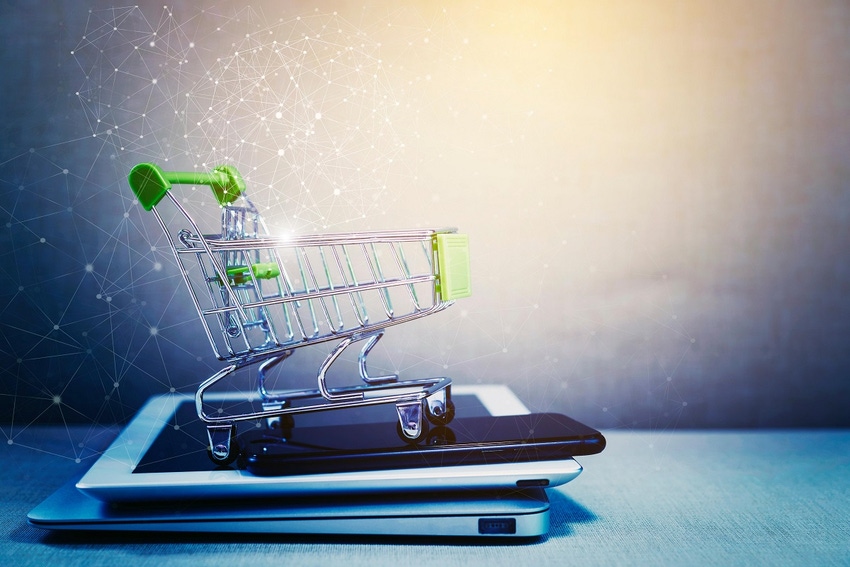Serving Today's Customer: Honor the Surface
Commerce is facing a new trend: a new age of surfaces. Here’s what we’ve learned about how businesses can start to implement this trend, which will soon impact all businesses.

Competition takes many forms, but with a nearly universal characteristic: The serious competitor has something new. It may be an invention, a cheaper and better method of production, a better supply chain, novel ways to reach the customer, new insight, or some other game-changing innovation. Everyone else must adapt to the new thing fast or fail.
What's the new thing in commerce today? One might say online consumers, or mobile shopping -- or even the rise in direct-to-consumer merchants and the increasing use of data analysis and AI for production and sales. There is one thing, though, that touches all of these.
We are in a new age of surfaces.
By “surface,” we mean one of the myriad ways in which consumers now seek information, entertainment, commerce, and social life. These include mobile devices, voice communications, kiosks, and increasingly smart watches, connected cars, many televisions, connected exercise machines, and more. These are all aspects of a consumer’s single connected life, which is a part of their lives in the physical world and thus shouldn't be thought of exclusively as discrete channels and experiences. It’s clear that the “customer journey” has far more paths and richer contexts than ever before.
Instead of asking, “What is our mobile strategy?” or “Should we do something on connected exercise bikes?” companies should be asking questions like, “What is the context when our customers use this surface? What is a simplified customer experience on this surface?” And perhaps most important, “What learning are we trying to gather here to better serve customers?”
In our conversations with both successful traditional businesses and dynamic new companies, here’s what we’ve learned about how businesses can start to implement this trend, which will soon impact all businesses.
Why This Is Happening
The advent of surfaces is an evolution in the decades-long process of connected life. In both technology and society, networks become more powerful when they gain nodes and connections. Even before the digital age, people sought connections among their phone numbers and mailing addresses, for purposes such as catalog shopping and obtaining services.
In today’s day and age, when the information on a smartphone, wearable and connected TV are pooled, it effectively affords a fuller representation of a customer's life and needs. Customers opt into these services in order to have a better continuous experience. These surfaces now provide businesses new ways to serve their customers. Businesses can gain new types of data about needs and behaviors to make their products and services more relevant. For example, car manufacturers can provide just-in-time assistance, delivering information faster and in an accessible format to drivers, while helping OEMs better understand what drivers need.
Why Businesses Should Care
This new focus creates continuity of customer experience, no matter what the surface of engagement, both digital and physical. It affects commercial processes and requires new workflows. Where there was a traditional steppingstone process of brand awareness leading to marketing, marketing to sale, and sale to post-sales service, today’s customer expects something more personalized across their entire customer journey.
That requires enterprises to see their product, operations, and experiences in new ways. Traditionally, the creation of a new product would begin with extensive customer surveys, lots of research, product and packaging development, the creation of perhaps several million units, and then take these to market, later judging the outcome. In a surface-oriented scenario, there are far more data signals from more sources: The outcome of every encounter rapidly informs every future sale, every marketing approach, and every product decision.
The Technology That Makes This Possible
There are several dimensions to surface-centric understanding. Context is perhaps the easiest to establish, as it's largely inherent in the type of surface (if someone is on a connected bike, they are likely exercising). The more simplified a customer experience is, means an easier on-ramp to interaction, typically using voice communication. This helps businesses better understand their customers by using a near-continuous data feed that’s gathered, processed, and applied in near real-time.
Data and analytics and machine learning make this approach possible. The data streaming from all these surfaces is ingested into machine learning and analytics platforms, which generates new insights and growth opportunities.
How Businesses Can Start To Implement This
There is much to learn in what is new here -- that is the nature of great competitive advantages -- but as we explore this new world, it's useful to remember that the new grows out of what was proven over time. When the only “surface” was the mail-order catalog or the store, merchants gathered data from their physical sites, counting cars in a parking lot, looking at sales at different shelf heights, or matching customer preferences to ZIP codes. To engage and please their customers better, they did it by wielding the best data possible.
In today’s world of multiple surfaces and improved technological capabilities, companies should continue this practice by leveraging data from these surfaces and new tools for analyzing that data. They should develop scorecards of their entry points, the types of interactions on each one, and the rate of success. They should also combine the data across these interactions for deeper insights from the end-to-end customer journeys.
In a world with far more capability, the home truth that the real differentiator comes from customer-focused innovation hasn't changed. If anything, it's truer than ever.
About the Author(s)
You May Also Like









